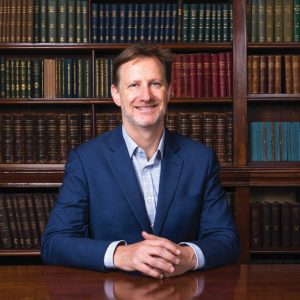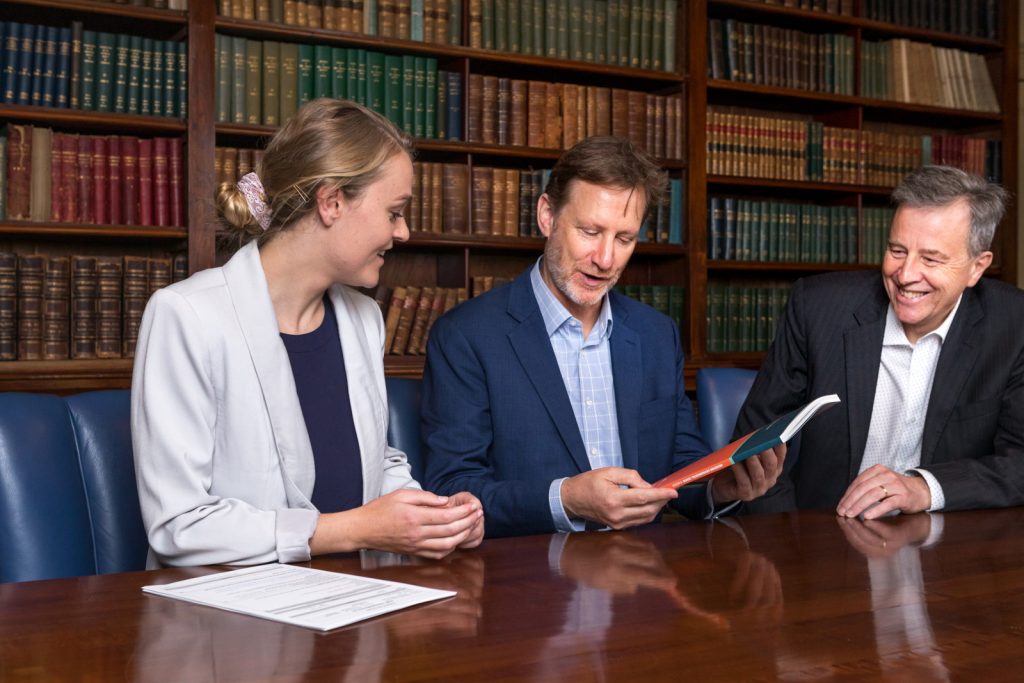Scientell: science communication meets science education
How do you form a cloud in a plastic bottle? Scientell founders Simon Torok and Paul Holper are on a mission to maximise the impact of scientific information through science communication and education
WHAT INSPIRED YOU TO SET UP SCIENTELL?
We first met at a climate change science conference in 1994, and then worked together when Paul was communication manager for CSIRO Atmospheric Research and Simon was communication manager for CSIRO Environmental Mechanics. A couple of years later, Paul suggested we write a science trivia book together, which was published by ABC Books in 1999. Over the ensuing decade, Paul worked at CSIRO in Melbourne and Simon worked in Canberra, then England, and then also at CSIRO in Melbourne. As we worked in our day jobs, we continued to write together in our spare time, with an average of one book published each year. This efficient, spare-time writing and our collaborative work together at CSIRO laid the foundation for Scientell in 2015. We saw a need for science communicators to help scientists get their research to those who need to use it.
WHY ARE YOU PASSIONATE ABOUT SCIENCE EDUCATION?
Science communication and science education go hand in hand. Science education for young people is especially important, as these are the minds of the future, so it is our job to ensure that they have access to the latest, accurate information and knowledge. In previous jobs, Paul was a chemistry teacher and Simon worked for CSIRO Education, after spending a year travelling around Australia presenting science shows with a science circus. Experience in both positions helps us communicate effectively for our clients.
SCIENTELL HAS PERFORMED SCIENCE SHOWS FOR CHILDREN IN AUSTRALIA AND ABROAD. WHAT CAN TEACHERS/PARENTS/CHILDREN EXPECT FROM THESE SHOWS?
The shows include hands-on demonstrations using easily accessible, everyday objects to demonstrate important scientific concepts. For example, you can form a cloud in a plastic bottle to demonstrate the indirect cooling effect of aerosols, as follows:
1. Pour a small amount of cold water into a large, clear plastic soft drink bottle. Screw on the cap and shake the bottle. Squeeze and release the bottle a few times. Nothing should happen.
2. Next, open the bottle and drop a lit match into it (the match will go out when it hits the water).
3. Screw on the cap, squeeze the bottle and then again shake it. The bottle will appear to fill up with smoke. But squeeze and release the bottle again a few times, and it will become clear that it is not smoke, but fog (or a cloud in a bottle).
When water condenses, the droplets may form clouds. Particles of dust in the air help the droplets form. In fact, without tiny particles in the air, clouds would not form at all. Here, the drops form on the smoke particles. This activity demonstrates many concepts, such as that high pressure leads to clear skies and low pressure leads to clouds, and also that the addition of small pollutants to the atmosphere can have an impact on cloud formation.
We first met at a climate change science conference in 1994, and then worked together when Paul was communication manager for CSIRO Atmospheric Research and Simon was communication manager for CSIRO Environmental Mechanics. A couple of years later, Paul suggested we write a science trivia book together, which was published by ABC Books in 1999. Over the ensuing decade, Paul worked at CSIRO in Melbourne and Simon worked in Canberra, then England, and then also at CSIRO in Melbourne. As we worked in our day jobs, we continued to write together in our spare time, with an average of one book published each year. This efficient, spare-time writing and our collaborative work together at CSIRO laid the foundation for Scientell in 2015. We saw a need for science communicators to help scientists get their research to those who need to use it.
WHY ARE YOU PASSIONATE ABOUT SCIENCE EDUCATION?
Science communication and science education go hand in hand. Science education for young people is especially important, as these are the minds of the future, so it is our job to ensure that they have access to the latest, accurate information and knowledge. In previous jobs, Paul was a chemistry teacher and Simon worked for CSIRO Education, after spending a year travelling around Australia presenting science shows with a science circus. Experience in both positions helps us communicate effectively for our clients.
SCIENTELL HAS PERFORMED SCIENCE SHOWS FOR CHILDREN IN AUSTRALIA AND ABROAD. WHAT CAN TEACHERS/PARENTS/CHILDREN EXPECT FROM THESE SHOWS?
The shows include hands-on demonstrations using easily accessible, everyday objects to demonstrate important scientific concepts. For example, you can form a cloud in a plastic bottle to demonstrate the indirect cooling effect of aerosols, as follows:
1. Pour a small amount of cold water into a large, clear plastic soft drink bottle. Screw on the cap and shake the bottle. Squeeze and release the bottle a few times. Nothing should happen.
2. Next, open the bottle and drop a lit match into it (the match will go out when it hits the water).
3. Screw on the cap, squeeze the bottle and then again shake it. The bottle will appear to fill up with smoke. But squeeze and release the bottle again a few times, and it will become clear that it is not smoke, but fog (or a cloud in a bottle).
When water condenses, the droplets may form clouds. Particles of dust in the air help the droplets form. In fact, without tiny particles in the air, clouds would not form at all. Here, the drops form on the smoke particles. This activity demonstrates many concepts, such as that high pressure leads to clear skies and low pressure leads to clouds, and also that the addition of small pollutants to the atmosphere can have an impact on cloud formation.
CAN YOU GIVE AN EXAMPLE OF AN EDUCATION STRATEGY SCIENTELL HAS WRITTEN FOR GOVERNMENT ORGANISATIONS?
The Melbourne Water Education Strategy is one example. This strategy included a review of what education activities had been done in the past, what the company could do in the future and how this might be implemented. We produced a series of appendices, which included observations from our interviews with staff and stakeholders, and also trends in education across the state of Victoria.
WHAT IS AUSTRALIA DOING TO MAKE SCIENCE FUN AND ENGAGING FOR YOUNG PEOPLE?
Access to technology is increasingly expanding science education activities across the country through annual events such as National Science Week (for which we produce an annual educational brochure). The aim is to engage students in science as an interesting and fun activity.
TALKING FROM EXPERIENCE

PAUL HOLPER
Prior to founding Scientell with Simon, Paul was a secondary school teacher, teaching science and chemistry. He also managed CSIRO’s involvement in the Australian Climate Change Science Program.
“There’s a step-by-step process that I had to go through as a teacher that serves me well today in my science communication work. Firstly, I need to understand the material, and then work through methods and strategies for explaining it to others. Often, it’s the process of explaining or communicating science that helps your own understanding.
“Simon and I co-authored three Amazing Science textbooks published by Oxford University Press, designed to appeal to a wide spectrum of students and cover the complete Australian science curriculum for Years 7, 8 and 9.”

SIMON TOROK
Simon has worked in communication for 25 years, including as communication manager for CSIRO in Canberra and in Melbourne, and as the communication manager for the Tyndall Centre for Climate Change Research in England. He was part of the CSIRO education team and was editor of CSIRO’s Helix and Scientriffic magazines.
“These magazines have merged to form a new magazine, Double Helix, which contains fun and exciting science articles, activities and competitions to promote an interest in science, technology, engineering and maths: doublehelixshop.csiro.au
“CSIRO’s education programmes aim to inspire students to pursue STEM education and equip the next generation with the required skills for the future. As well as the Double Helix magazine, their programmes provide ideas and resources for students to do at home and in the classroom, advice and experience to help students plan career pathways, training programmes to help support and develop teachers, and other education programmes.
“Science education should help young people understand the nature of science in the real world, which involves discovering answers to unsolved problems and making the world a better place.
“Education is a lifelong pursuit. This is why Scientell works to communicate clear science not only to children, but also the general public, the scientific community, government and industry.”
Scientell specialises in synthesising scientific and technical information into clear and usable knowledge. Since its inception, Scientell has completed many projects for governments, universities, private companies and NGOs, nationally and internationally.
![]() www.twitter.com/Paul_scientell
www.twitter.com/Paul_scientell
![]() www.twitter.com/Simon_scientell
www.twitter.com/Simon_scientell
![]() www.linkedin.com/company/scientell-pty-ltd
www.linkedin.com/company/scientell-pty-ltd
Website: www.scientell.com.au
SCIENTELL RESOURCES FOR TEACHERS AND STUDENTS
STATE OF THE ENVIRONMENT REPORT
Scientell worked with the Australian Capital Territory’s Commissioner for the Environment to create two versions of the State of the Environment report, for younger and older students, so that young people can better appreciate and understand their local environment in Canberra, Australia: www.scientell.com.au/projects/act-state-of-the-environmentreport-for-young-people
AMAZING SCIENCE
Simon and Paul have written 20 books on science, climate change and environmental matters, some of which are suitable for secondary school students. Published by Oxford University Press, Amazing Science covers the complete Australian science curriculum for Years 7, 8 and 9: www.scientell.com.au/projects/amazing-science-secondaryschool-science-textbooks
CLIMATE CHANGE: WHAT YOU CAN DO ABOUT IT AT WORK, AT HOME, AT SCHOOL
Easy to read, highly accessible, yet full of the latest research and up-to-the-moment science, this book takes you through the simple yet effective things you can do in your home, your workplace, your school and elsewhere to limit your carbon emissions: books.google.com.au/books/about/Climate_Change.html?id=6XhrOzgqt_gC&redir_esc=y
IMAGINING THE FUTURE
Published by CSIRO Publishing, this book aims to show young Australians what a possible future could look like, based on current scientific advances. Printed food, talking with animals, designer babies, weather control, and immortality: some concepts are more likely than others, while some are already happening. https://www.scientell.com.au/projects/imagining-the-future-popular-childrens-book




